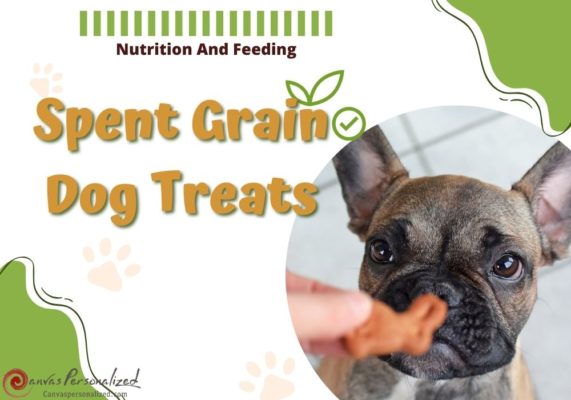It is your responsibility as a dog owner to guarantee your pet’s health at all times. You should care for the plants you keep in and around your house. Some plants are completely harmless to dogs, while others can cause severe illness or even death. In this Canvas Personalized blog article, we’ll review plants safe for dogs and how those choices can improve your pet’s health.
What Are Dog Friendly Plants?
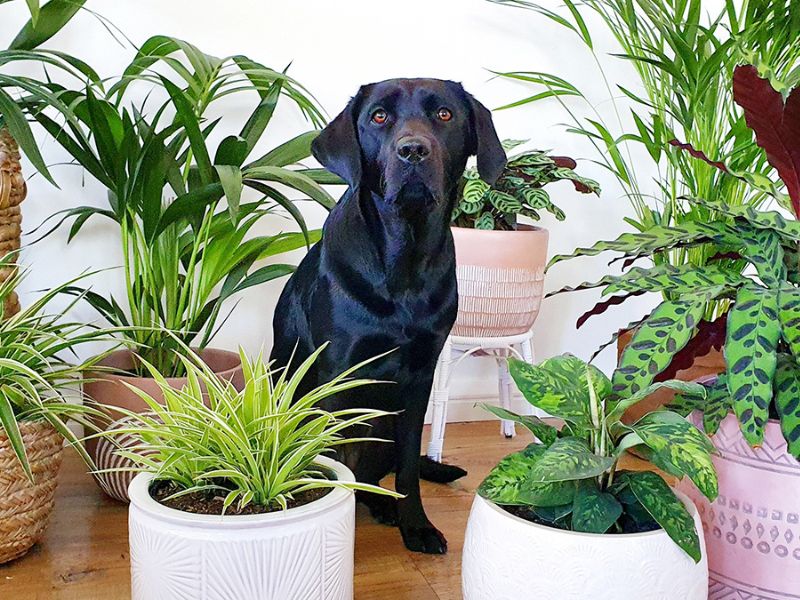
Dog friendly plants are safe and non-toxic for dogs to be around. While many plants can add beauty to your home and garden, some can be harmful or even fatal to dogs if ingested. So that’s why you should remember that some plants may include thorns, spines, or seeds that could injure or sicken your dog. So most non toxic plants for dogs should also be dog-friendly, meaning that your dog might sniff around in them (or even trample them) without causing any harm to either your dog or the plant.
This article will discuss some of the safest plants for dogs to add to your home or garden, according to the American Society for the Prevention of Cruelty to Animals (ASPCA), and how they can benefit you and your furry companion.
Top 25 Indoor Plants Safe For Dogs
1. African Violet (Saintpaulia)

The African violet, or Saintpaulia, is one of the safest plants for dogs that may be kept in the home. Also, they are sought after because they flourish in settings preferred by humans, such as typical temperatures and humidity.
African violets thrive in a soil-free potting mix with a balanced fertilizer. Although the plant’s leaves and blossoms are safe for pets to eat, your fertilizer could be harmful if your pet ingests even a tiny amount. Avoid using a chemical fertilizer on your African violets if you’re worried about dog food for skin allergies.
2. Baby’s Tears (Soleirolia soleirolii)
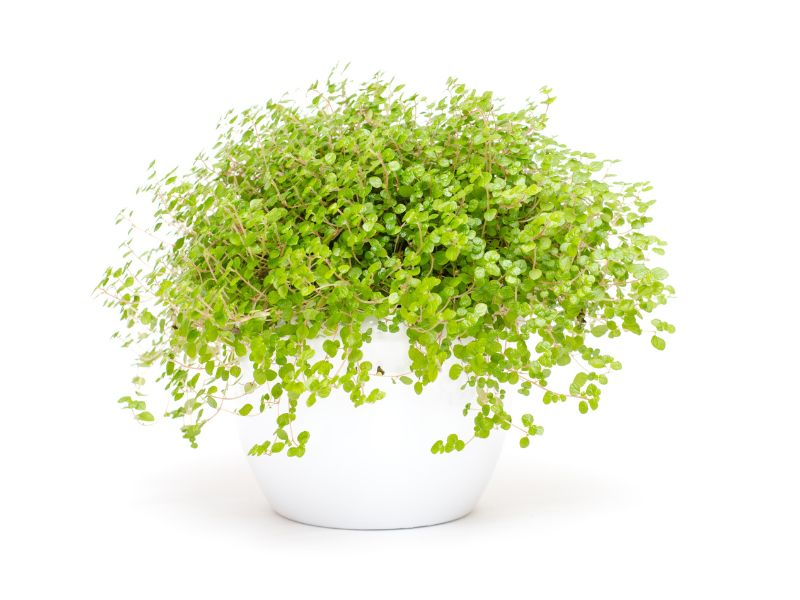
Whether in a terrarium, a small hanging basket, or as a companion plant around the base of an indoor tree, these tiny green leaves will leave a stunning impression on your house. The baby tears can deter dogs who prefer to dig up your houseplants if they see that the soil is covered.
3. Chinese Money Plant (Pilea peperomioides)

The low-maintenance plants are related to nettles (Urticaceae) and are entirely dog friendly plants. Their signatures are the round, meaty, and bright green leaves. The money plant does best in an area with lots of bright, indirect light but can make do with less if necessary.
If you water your plants, do it less often but more thoroughly. Watering too frequently might cause the soil to become waterlogged. If you forget to water the plant too long, the disc-shaped leaves may droop, as a warning sign.
4. Baby Banana Tree

The enormous banana trees, known as the non toxic plants for dogs, make a stunning focal point in your house. The grown tree can reach 6 feet or more, and each leaf is attached to the stem at the base and can be used to steam or serve food in tropical cuisine. Given its suitability for human consumption, it should come as no surprise that the ASPCA considers this plant non-toxic; hence, it can be safely kept in the home with dogs.
This tropical houseplant requires an environment similar to its native range to flourish. In particular, the banana tree involves a lot of water, sunlight, and fertile soil. Bananas are known as healthy foods for dogs but don’t count on your indoor banana tree for a regular supply.
>>>Check out more healthy foods for your dog that you can find in your kitchen!
5. Echeveria
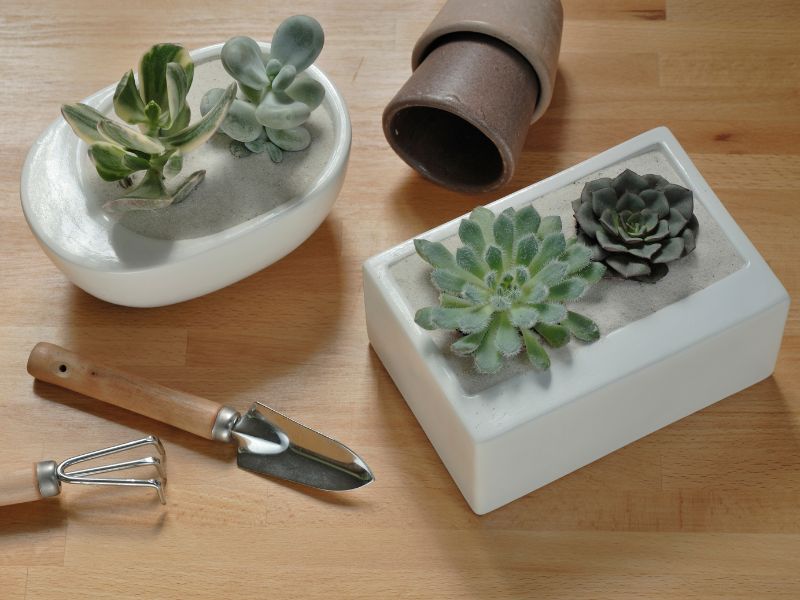
If you have pets like dogs, you can feel good about bringing this succulent into your home. The rosette-shaped leaves of the echeveria plant can be silvery green, blue-green, or even lilac in color.
You don’t need to take care of this indoor houseplant like other succulents; ensure it gets at least 4 to 6 hours of sunlight daily. Water when the soil is dry, about once per week or two. Both frequent watering and long durations without water harm this plant’s health.
6. Gloxinia (Sinningia speciosa)
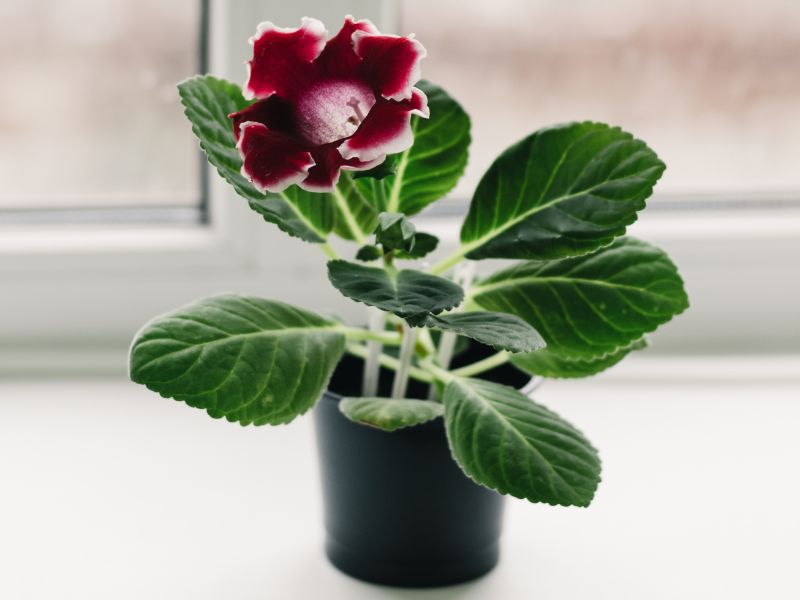
Flowering and low-growing Gloxinia hybrids can be kept in a home’s terrarium. The plant in its pot is small enough to fit on a windowsill or serve as a table centerpiece. Remember that this low-light plant requires protection from strong sunlight in any setting. Regular watering is necessary; the soil should be kept moist while growing. In time, its flowers and leaves will fall off.
Dogs are safe among these plants’ ruffled, thick leaves and single or double flowers. Moreover, these Gloxinia flowers are commonly given as presents.
7. Spider Plant (Chlorophytum)

The spider plant’s trailing leaves make it an ideal choice for hanging on high shelves, in baskets, or even on a windowsill (provided it doesn’t get too much light). They are non toxic plants for dogs and are renowned as tough houseplants because of their unique names, such as ribbon plants and airplane plants.
The spider plant can live in different places with different amounts of light, water, and soil. Plant it in a pot using a mixture of loose, loamy soil, and water it frequently. Too much direct sunlight will damage the spider plant’s leaves, while too much shadow will prevent it from flourishing.
8. Venus Fly Trap (Dionaea muscipula)
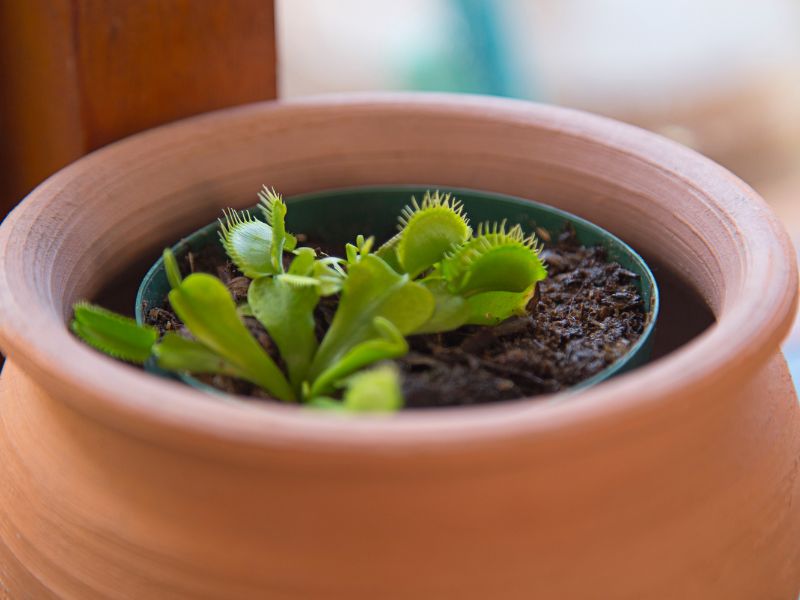
When it comes to houseplants, carnivorous plants are a lot of fun, but what do you do when your cat decides to pounce on one of those traps as it snaps shut? Dionaea muscipula, also known as the Venus flytrap, is not hazardous to dogs, so don’t worry if your dog decides to give it a nibble out of curiosity. These pet-safe plants can remain in top condition by receiving plenty of sunshine and irrigation with distilled water.
9. Areca Palm (Dypsis lutescens)
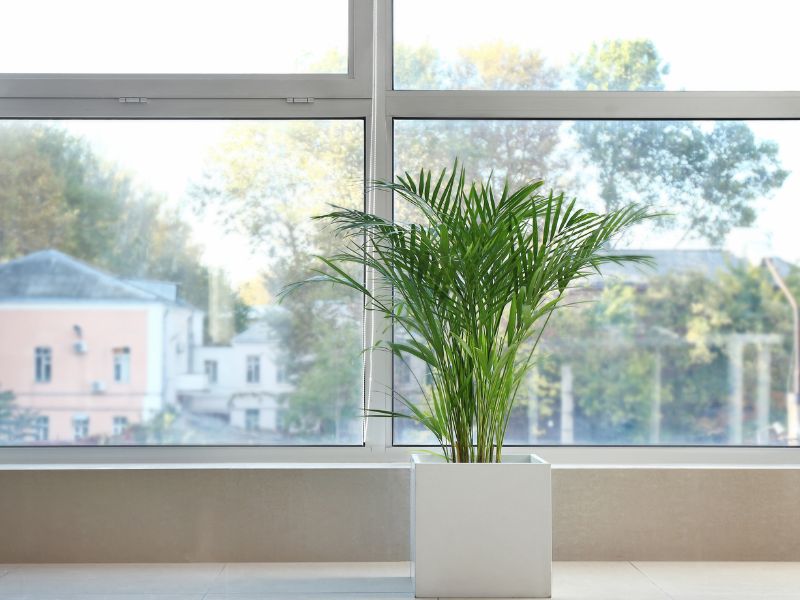
Dypsis lutescens plants, known as the tropical oasis at home, are excellent non toxic plants for dogs.
This indoor palm tree species must have a lot of direct sunlight. Placement in a south- or west-facing window is recommended. A pot that allows the soil to dry out completely in between waterings is essential. Remember that it does best when watered with pure water or collected rainwater.
10. Boston Fern (Nephrolepis)
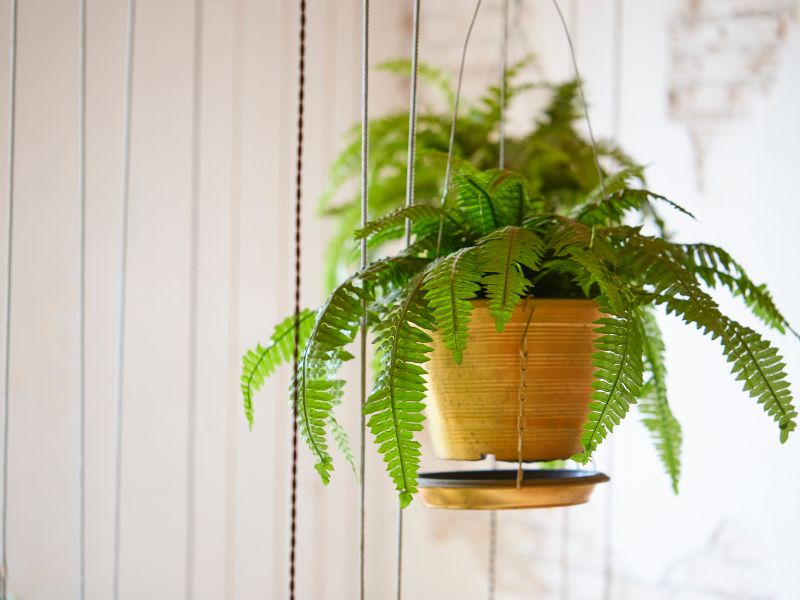
Boston ferns are a perennial favorite among dog friendly plants. The fronds of this plant, which can be mistaken for those of a sword fern, grow vertically from the plant’s core before arching outward. The plants are safe in the bathroom or guest room, as the leaves do not harm dogs. Watering and plenty of bright, indirect light are essential for the survival of Boston ferns.
11. Calathea

The zebra and peacock plants are two common names for plants in the genus Calathea. These plants have huge, tropical leaves striped or dotted in a beautiful pattern. Calatheas are great for shaded areas among dog friendly plants because their foliage color fades in direct sunlight. Unfortunately, they are not the easiest houseplant to care for.
A steady temperature of 70 to 85 degrees Fahrenheit is ideal for calves (never below 60 degrees). You must water them regularly without drowning them. Calatheas are tropical plants that require high humidity, so a pebble tray filled with water can help create that atmosphere.
12. Haworthia
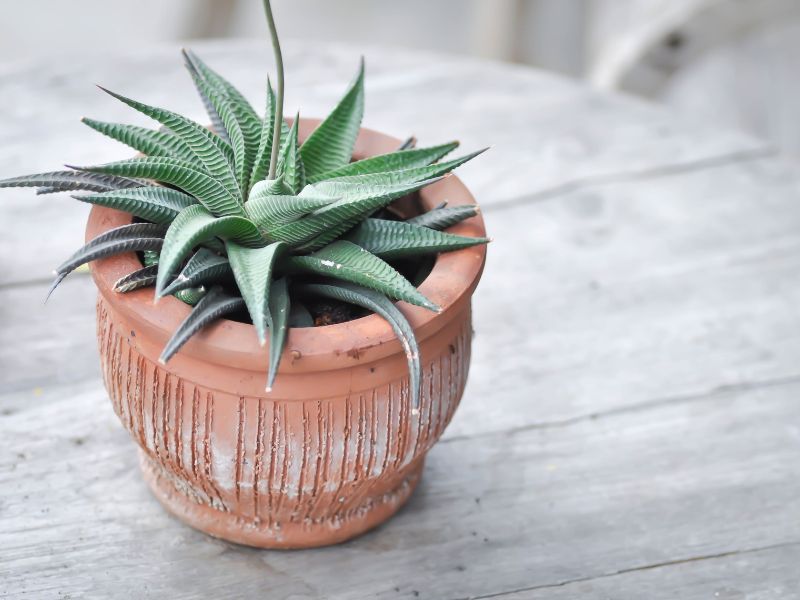
Haworthias are low-maintenance, slow-growing succulents that are plants safe for dogs. Plants reach maturity at 3 to 5 inches and can be bred into new plants by cutting off a cluster piece every two to three years.
Haworthia does best in bright light and should be watered once a week during the warmer months and less often during the cooler months. The loss of green coloration in the leaves indicates that the plant receives too little light. However, it can survive under moderate to low illumination.
13. Polka Dot Plant (Hypoestes phyllostachya)
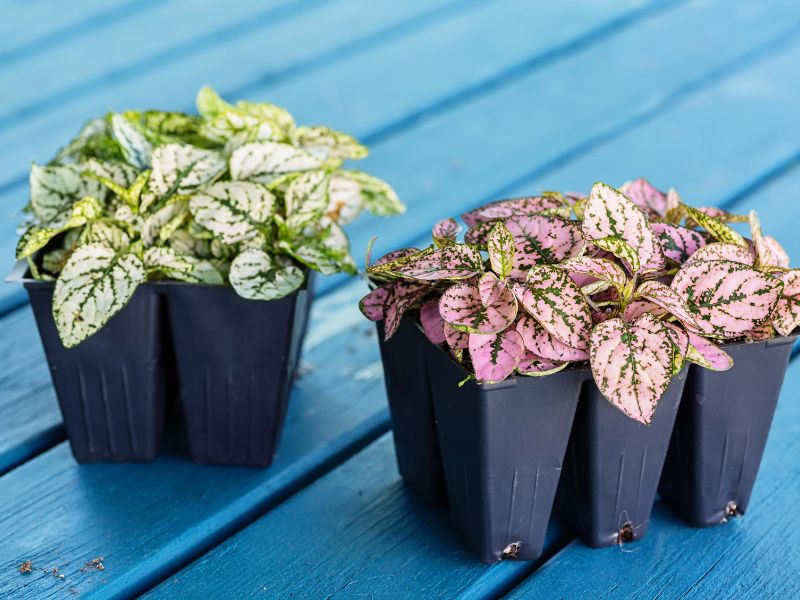
The green, pink, red, and white spots on the leaves of Hypoestes phyllostachya are so pretty that you don’t have to create the right conditions for them to bloom. Although the polka dots are non toxic plants for dogs, some may suffer from moderate stomach discomfort if they overeat.
14. Air Plant (Tillandsia stricta)
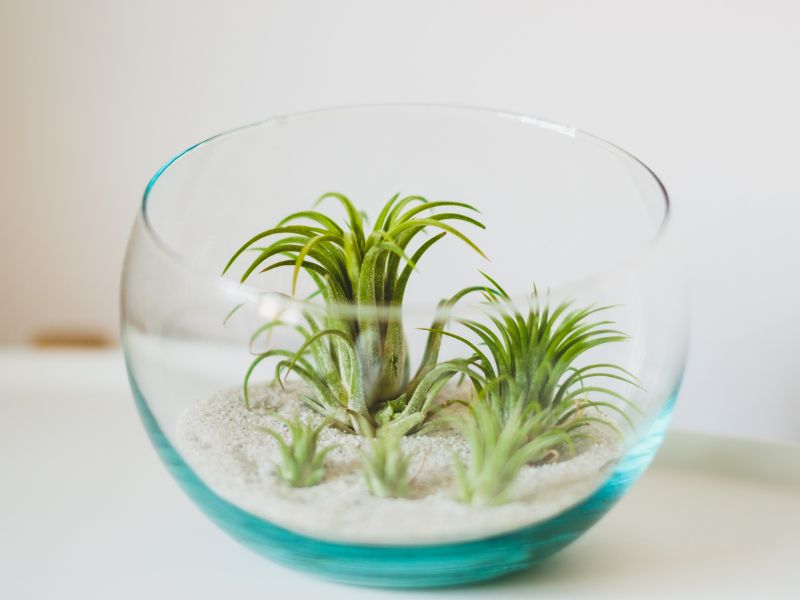
When caring for houseplants, air plants are in a class all their own since, as epiphytes, they can thrive without soil. You should instead mount them on a board or other stable surface. You should glue, wire, or rope this bromeliad to its mount, so your cat doesn’t knock it off and eat the plant.
Remember to soak the air plant for 10 to 30 minutes once every week or two if you want it to thrive. Heavy misting the plant multiple times per week is an alternative to soaking it if your chosen surface mount is too tricky.
15. Prayer Plant (Maranta leuconeura)
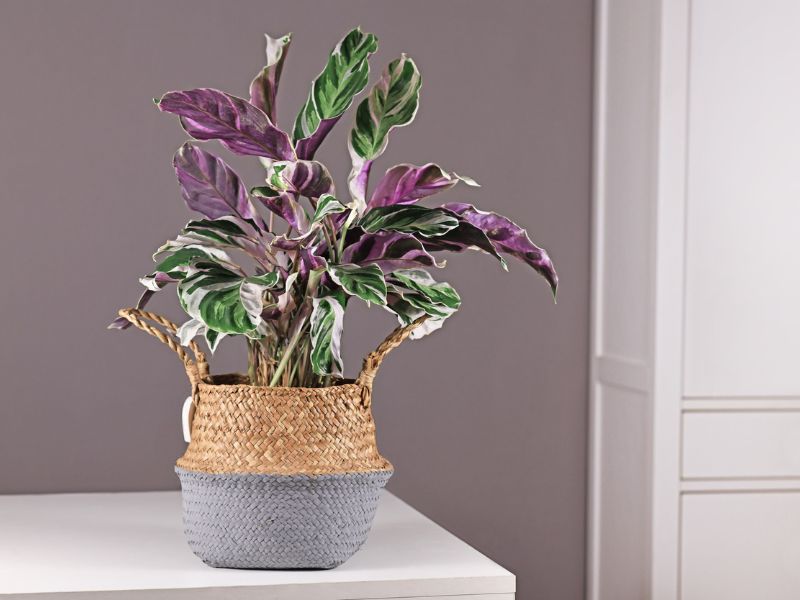
The prayer plant leaves have a strange habit of folding together at night, making them look like hands folded in prayer. Their tropical foliage makes them the safest plants for dogs. The prayer plant may thrive in various lighting settings, but bright light is ideal. It can also thrive with less intense illumination.
Do not underestimate the need to water this plant because the plant will likely die if the soil is arid. To avoid problems, water as soon as the top layer dries.
16. Friendship Plant (Pilea involucrata)
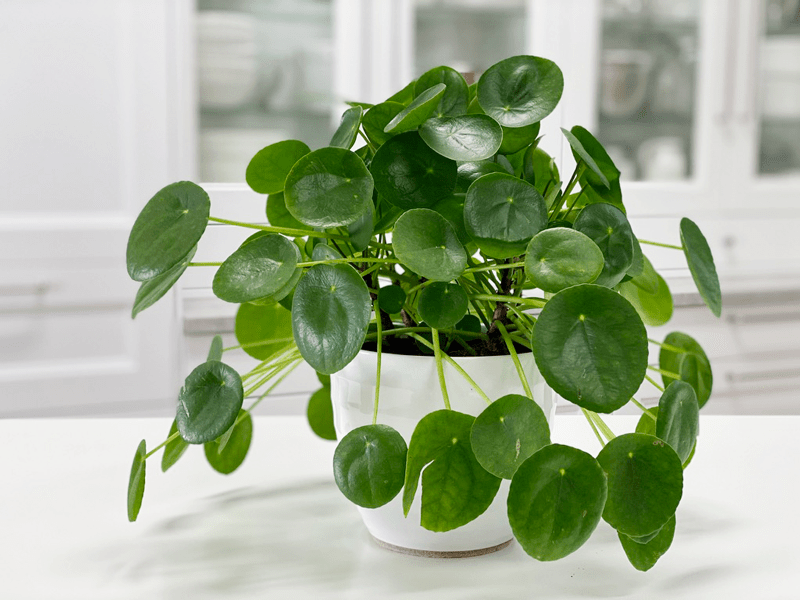
Pilea involucrata is a delicate-looking, trailing plant that prefers damp conditions. You can further reduce the likelihood of your dog nibbling on it by placing it in a terrarium. It’s one of the safest plants for dogs you can leave in any part of your house, even the bedroom, even if it attracts pets.
17. Peperomia
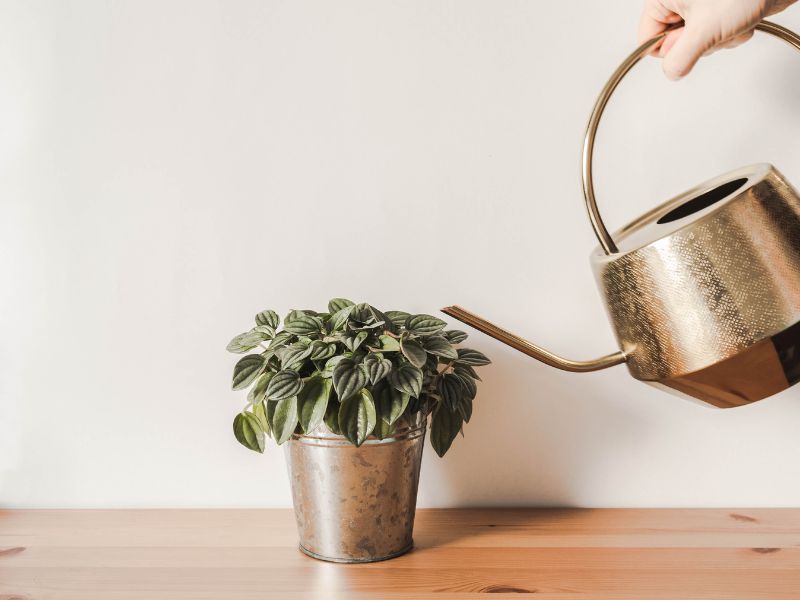
Peperomia species remain the safest plants for dogs due to their wide range of colors and textures. They may thrive in hanging baskets; don’t mind if you forget to water them occasionally.
18. Orchid (Orchidaceae)
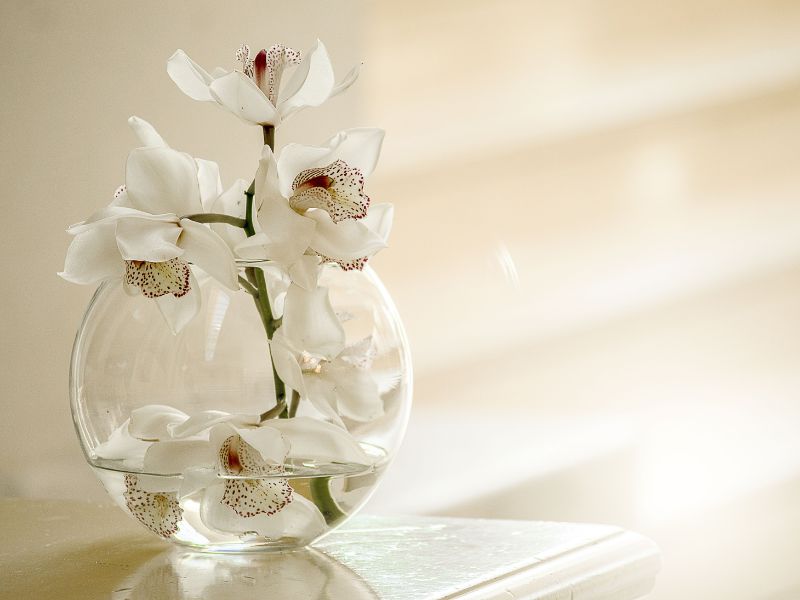
Orchids (Orchidaceae) might be included on the list of plants safe for dogs if you have a penchant for them. In the winter, when the days are shorter and there is less light, many orchids do well with low light and tangled roots and bloom for weeks.
19. Mosaic Plant (Fittonia albivenis)
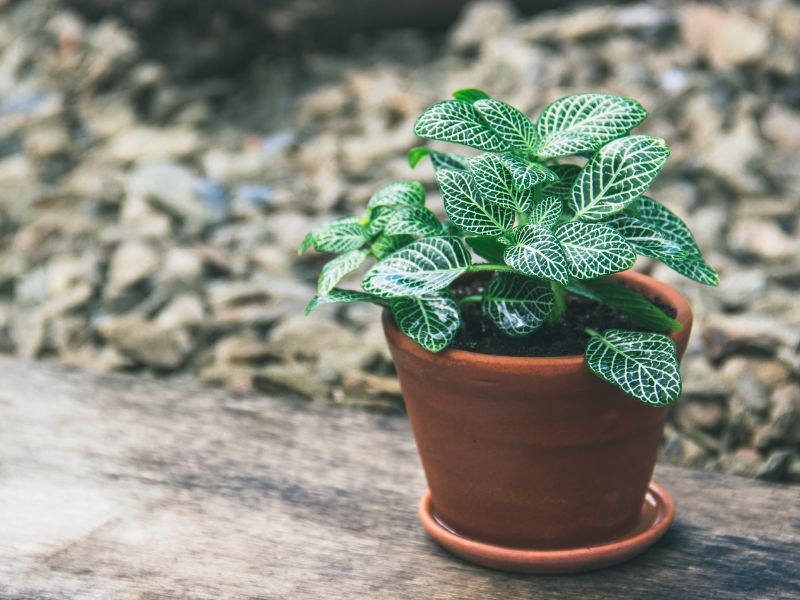
Fittonia aliveness goes by a few other names; the nerve plant is one of the safest plants for dogs. This native of the rainforest has attractive leaves with white or pink veins, but it is harmless to dogs.
Keeping this tiny houseplant in dim light with modest watering is relatively safe. However, it needs a highly humid setting, making it a suitable candidate for an in-house planter.
20. Ponytail Palm (Beaucarnea recurvata)
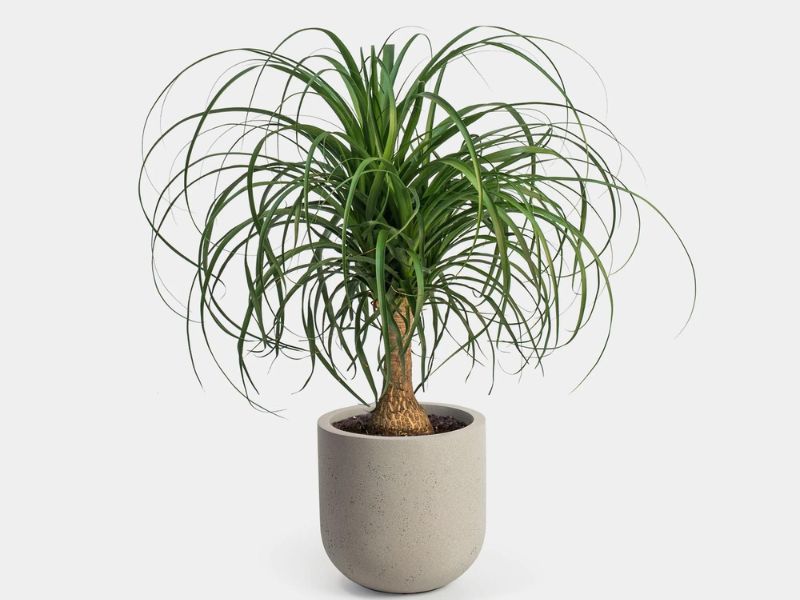
The ponytail palm, often known as the elephant’s foot because of its smooth, spherical trunk, is a well-liked houseplant. The only thing that hurt was the ponytail palm’s leaves. If this happens, try putting your ponytail palm somewhere your pet can’t reach or offering an edible substitute, such as cat grass. The ponytail palm is a non-toxic houseplant that does best in intense light and should be watered when it feels slightly dry.
21. Purple Waffle Plant (Hemigraphis alternate)
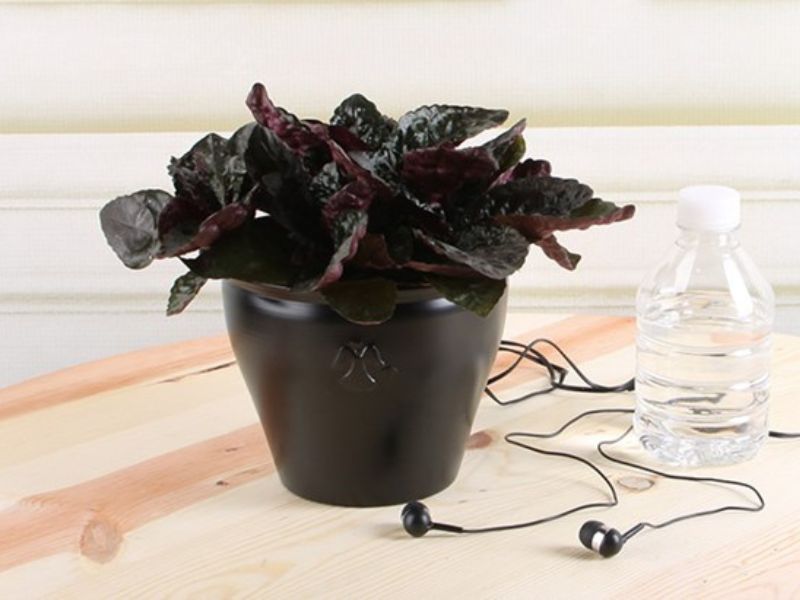
If you don’t like to care for flowering houseplants but want something with year-round appeal, consider the purple waffle plant (Hemigraphis’ Exotica’). The purple hue of the leaves can be preserved under bright indirect light. Purple waffle plants are a well-known air purifier that ensures you and your dog have a clean and safe breathing space.
22. Purple Passion Vine (Gynura aurantiaca)
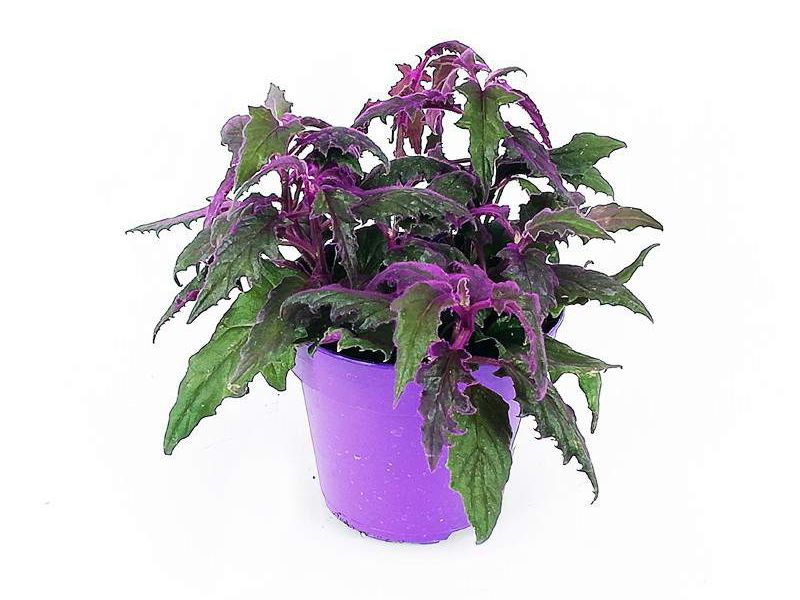
Unique among houseplants and the safest plants for dogs, Gynura aurantiaca is a must-have if you have pets. The leaves of these plants have soft, silky hairs. When exposed to more sunlight, the purple leaves deepen in hue. These plants develop rapidly, but their short life cycle should be considered. Watering the plant when the soil is dry can help it live longer by preventing root rot.
23. Hens and Chicks (Echeveria Succulents)
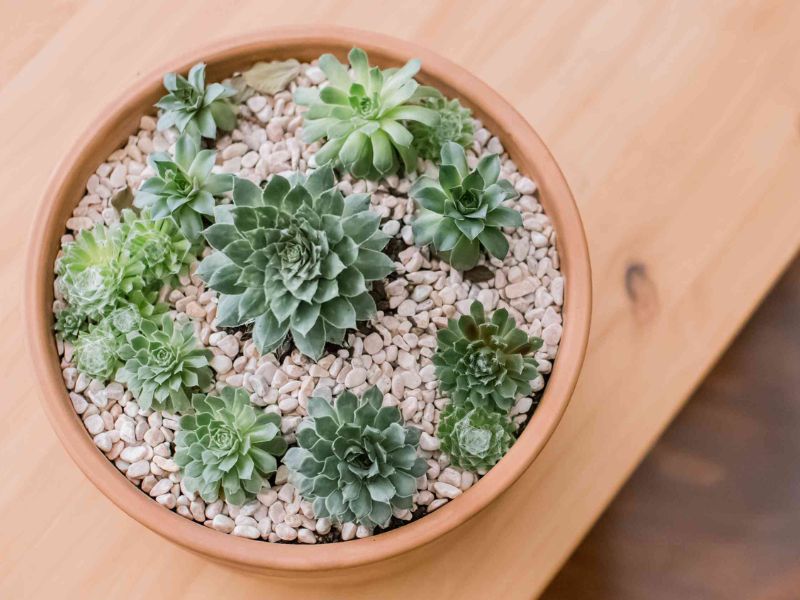
Put some succulents in here! Without exception, my favorite plants are succulents. These Echeveria succulents are beautiful, both in color and variety, and are non toxic plants for dogs. It is another popular option for home decorators who want to accommodate their pets.
It can survive without much water yet thrives in bright sunlight. If you put a few of these hens and chicks in a planter box, you’ll have a lovely focal point for your table.
24. Baby Rubber Plant (Peperomia obtusifolia)
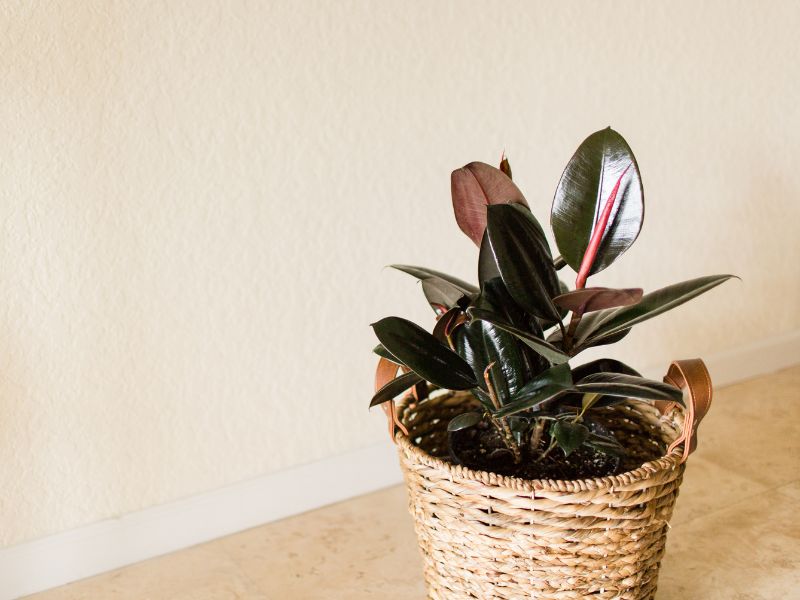
The baby rubber plant, also called Peperomia obtusifolia, is native to Florida and the Caribbean. It can be used in place of the rubber plant because it is less poisonous. It thrives in indirect light and requires little attention. This would look great on a bookshelf in the office, and in the kitchen, it would look great on the window sill. Due to its diminutive stature, the baby rubber plant can be placed anywhere you like.
25. Parlor Palm (Chamaedorea Elegans)
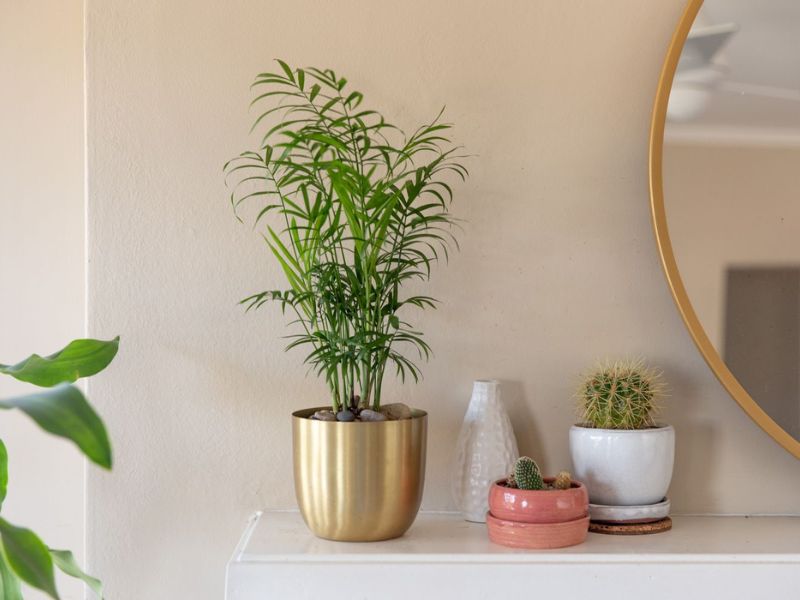
The Parlor Palms are among the most widely distributed palms because of their popularity as dog friendly plants. It requires little maintenance and looks excellent in tropical settings. You can furnish any room in your house with the proper furnishings.
Best 19 Non Toxic Plants For Dogs For Outdoor or Your Garden
26. Camellia
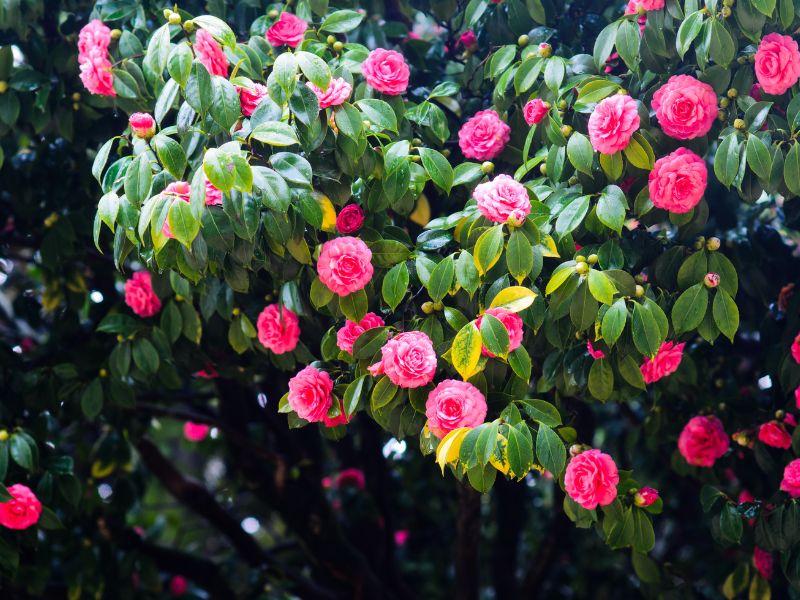
Putting these flowering shrubs in your garden may take some time and work, but they will give you annual blooms and require little care once fully grown.
Camellias do well in dappled shade and may make do with only occasional watering once they’ve reached maturity. The roots of a brand-new plant need to be established with water.
27. Dill
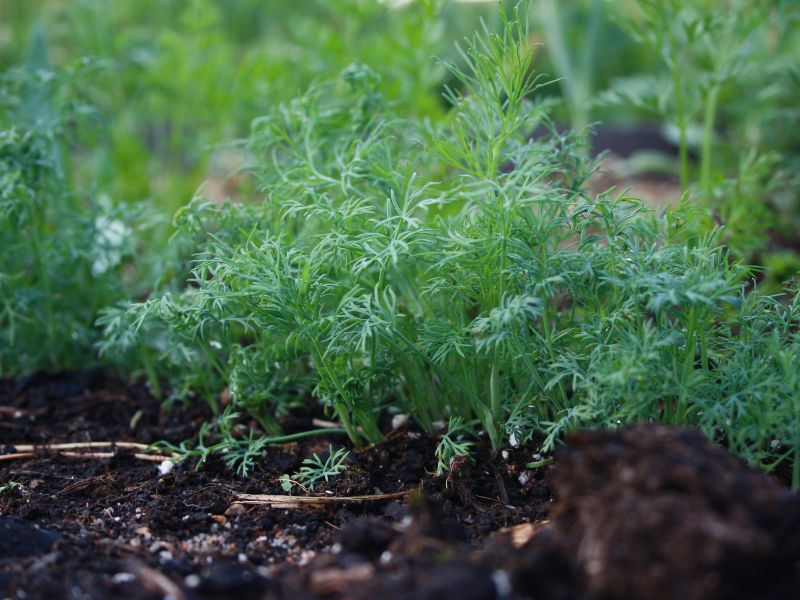
This feathery herb is one of the safest dog plants, as it is commonly used in human cuisine. Creamy salad dressings, soups, and grilled meats all benefit from the addition of this herb. These plants can quickly outgrow their allotted space, so plan accordingly.
28. Marigold Plants

These flowers are aesthetically pleasing, attract beneficial insects like bees to your garden, and discourage pests like beetles from invading your food crops. Also, they have beautiful flowers that look like the sun.
29. Fuchsias
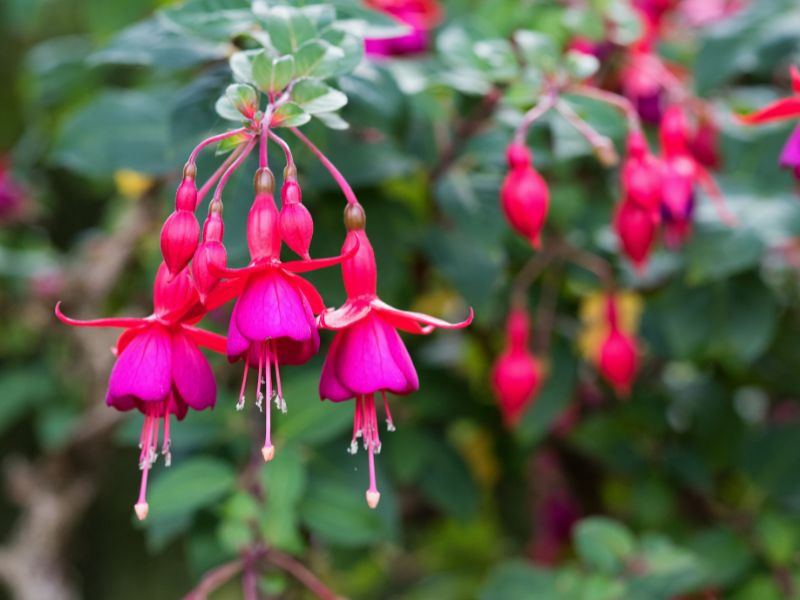
These refined pink and purple blooms are perfect for adorning outdoor hanging baskets. They thrive in the warm, temperate climate and can keep blooming into late autumn.
30. Magnolia Bushes
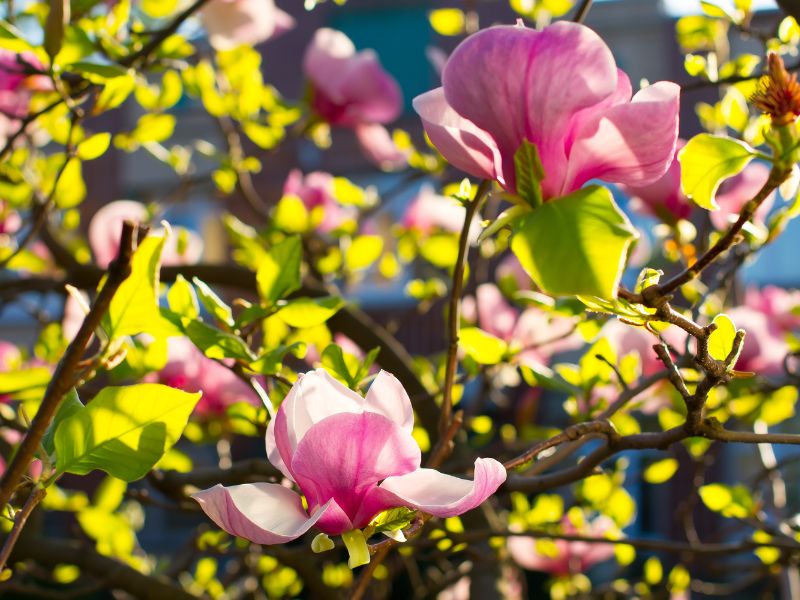
Most people consider magnolias tall trees, but they can also grow into safe dog shrubs. Magnificent purple, pink, or white blossoms can be found on most magnolia shrubs. If you can provide them with direct sunlight, they will thrive.
31. Purple Basil Plant

This magnificent basil brightens up your garden and makes excellent dog-friendly plants. After the danger of frost has passed, plant these fellows in a sunny location where they will get enough water. You and your dog can pick and eat as much as you like, from the garden to the year’s first frost.
32. Creeping Thyme
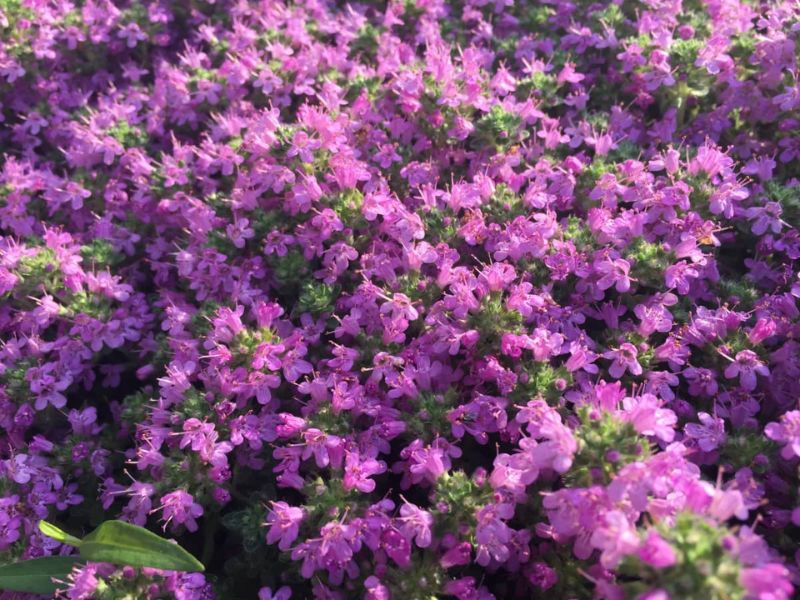
Thyme is another helpful herb that won’t harm your dogs; it’s a low-maintenance perennial that may be used as a ground cover. All it needs is a tiny bit of water and sunlight. Roasted vegetables, meat, soups, and potatoes all benefit from the addition of this aromatic herb.
33. Sunflower
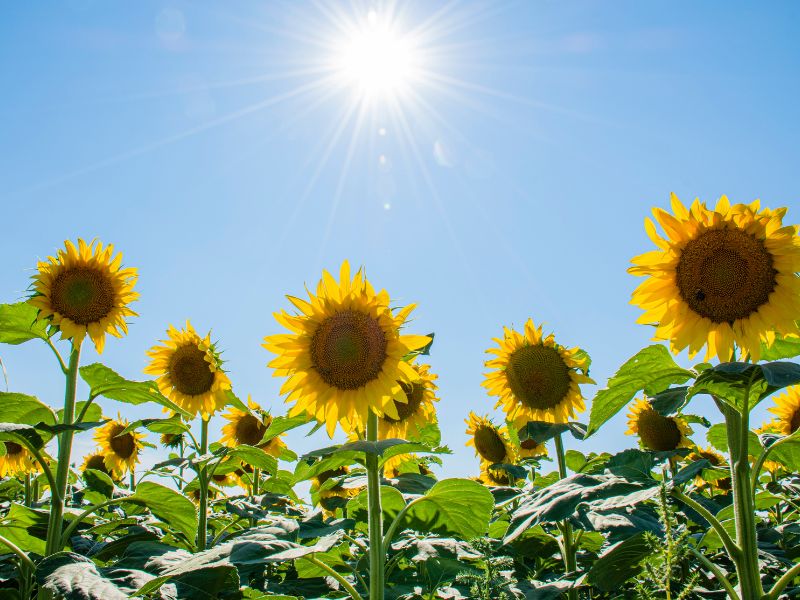
The sunflower is the quintessential summer flower. This annual plant comes in many shapes, sizes, and hues. These plants thrive in full sun and with regular watering, and they can reach heights of many feet, making them ideal for use as a border along fences or in front of the house. The seeds of sunflowers mature and attract birds in the fall after the brilliant petals have fallen.
34. Rosemary

A spreading species of rosemary is a sturdy way to fill empty spots in your yard with a low, fluffy cloud of evergreen that is also safe for dogs to eat. A beautiful design feature is for the stems to hang over the edge of a raised bed or container. A waft of aroma will be released when your dog runs through this sun-loving ground cover.
35. Coral Bells
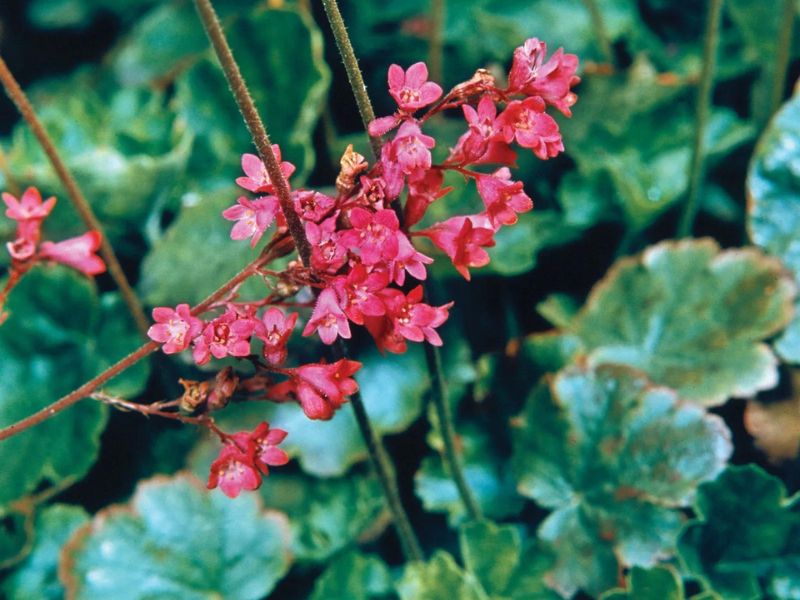
The leaves of coral bells range from green to orange to black, and the plant’s tiny flowers, carried aloft on long stalks, starkly contrast the foliage. They thrive in various situations, including shade, and need little maintenance. They are also plants safe for dogs, so you can put them wherever in the yard.
36. Pineapple Sage Plant
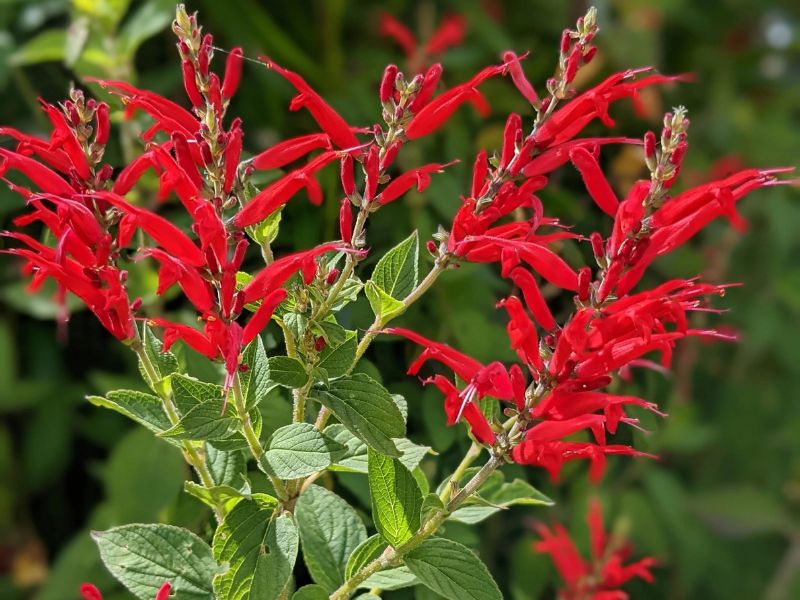
Pineapple sage smells and tastes great, and its pink tubular flowers will bring hummingbirds to your garden. Use it in fruit salads, salsas, and sangria. Despite being classified as an annual, it can return in the spring if your winters are mild.
37. Fennel
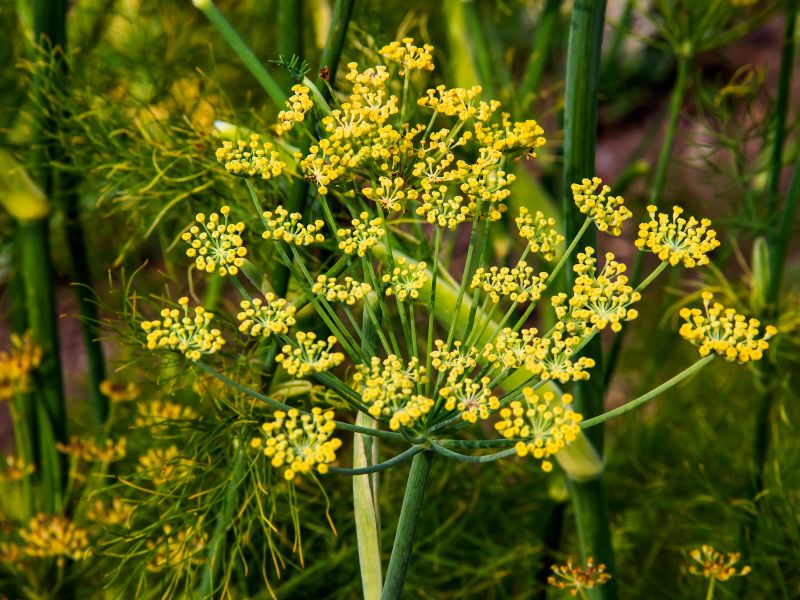
This delectable bulb has a licorice flavor and lovely feathery foliage. It’s outstanding for dogs to eat, but it’s even more delicious when prepared for humans: grilled meat adds a fragrant touch to salads. The seeds can be chewed as a tasty snack or brewed as a relaxing tea.
38. Snapdragons
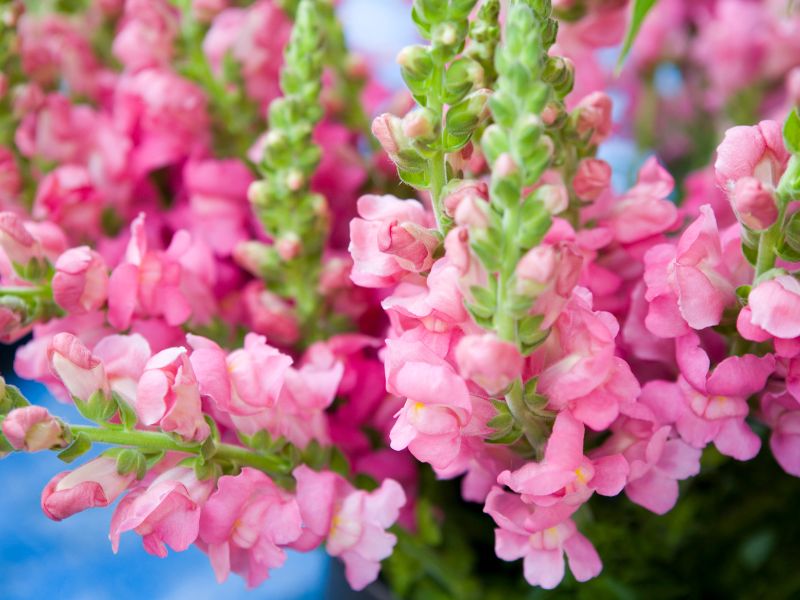
There’s nothing more popular than a bright snapdragon garden. These plants are safe for dogs and have a broad spectrum of colors on their tall stems, from yellow to red. They are also lovely when used in a bouquet.
39. Nasturtium

The nasturtium blooms have a startling peppery flavor and can be eaten. Nasturtiums can thrive in various soil types and don’t require fertilizers, making them ideal for those hard-to-use areas of your yard. They add a splash of color and a touch of elegance to garden pots and rock walls, and their fragrance is divine.
40. Hibiscus

A bouquet of hibiscus flowers will bring you to a faraway tropical paradise. In a natural setting, these bushes can reach a height of 13 feet and display shades of pink and pale purple. It’s the South Korean national flower and goes by the name “Korean rose.”
41. Bird’s Nest Fern
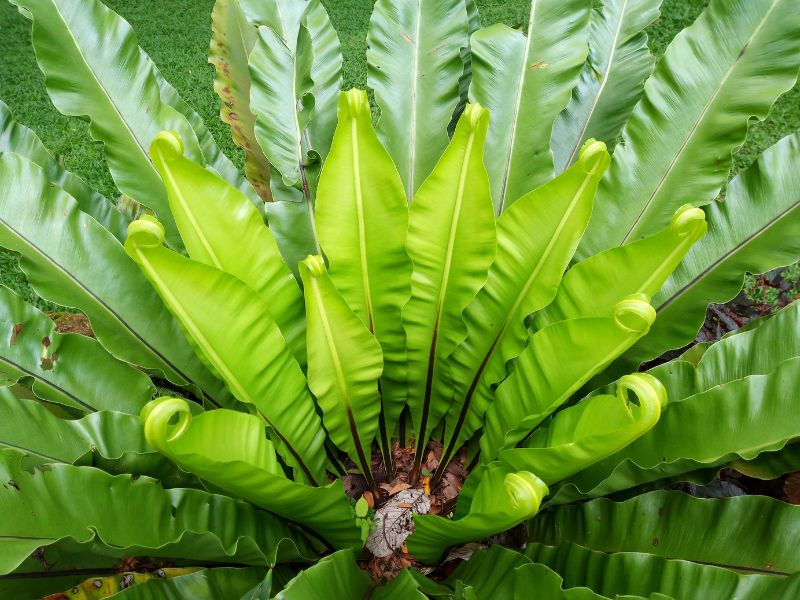
This green fern does well in the dim light and changing humidity that is common in bathrooms. Take care of your bird’s nest fern by planting it in well-drained, nutrient-rich soil and fertilizing it monthly from spring to fall. Temperatures between 60 and 80 degrees Fahrenheit are ideal for these plants. After the top soil dries out, give yours a good soak.
42. Gloxinia
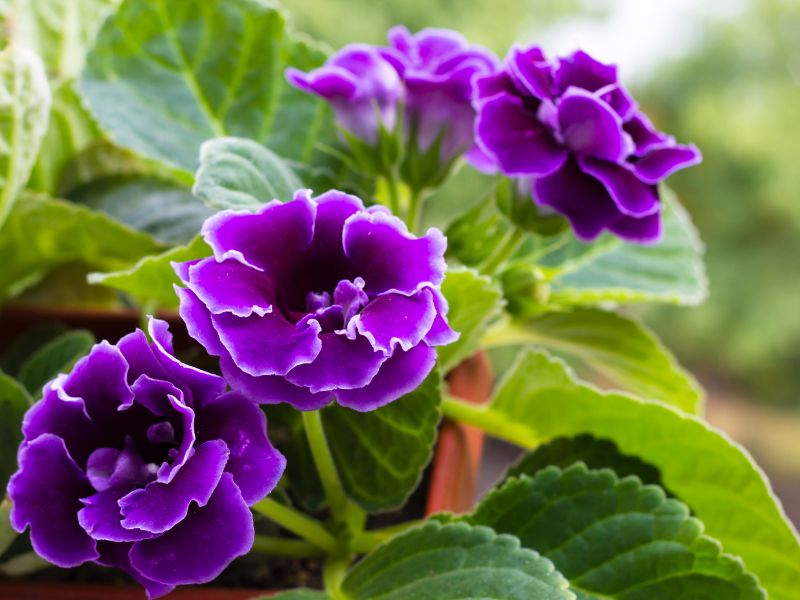
These flowers, originally from Brazil, will bloom in vibrant colors if given adequate sunlight. For optimal health, water the soil often and provide liquid plant food every two weeks.
These flowers do best between 71 and 75 degrees F, so set the thermostat accordingly. Please keep them in bright, indirect sunlight for about three weeks, and the seeds should sprout.
43. Watermelon Peperomia
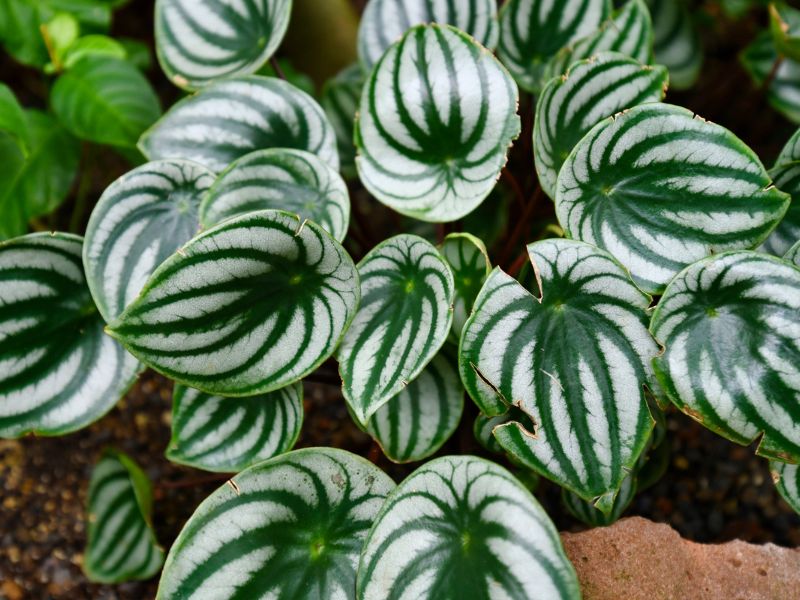
The watermelon is one of the safest plants for dogs among the many members of the Peperomia family (a quick look at its leaves makes it clear how it got its name). They do not require a lot of water and will thrive if kept out of direct sunlight. While peperomia doesn’t require a lot of water, you need to maintain temperatures between 65 and 80 degrees Fahrenheit.
44. Staghorn Fern
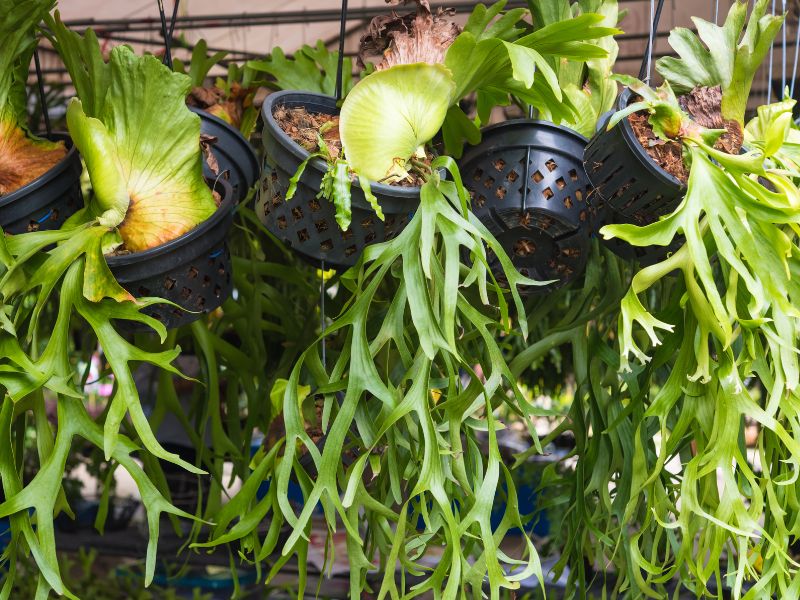
These ferns have two distinct frond types, naturally found in Australia. The dog-friendly plants look great in a hanging basket, a pot, or on a wall. The staghorn fern thrives in direct or indirect sunlight but cannot survive in total darkness. Depending on the climate, there should be one to three weeks between waterings (the more humidity, the less you need to water it). Or you can place it in a bathroom for watering and misting once every three weeks.
Symptoms of Plant Toxicity in Dogs
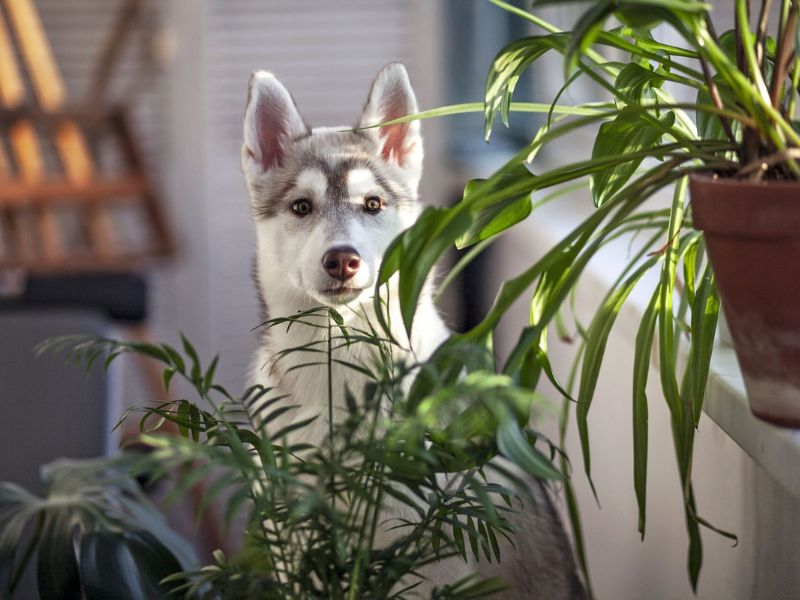
The fact that plants are labeled “dog friendly plants” doesn’t mean you shouldn’t be on the lookout for any unusual behavior on your dog’s part. It’s possible that your dog could get an upset stomach if it ate even a single leaf from your non-toxic plants. Your dog’s size, the form of the leaf, and the amount they eat all play a role in the likelihood of gastrointestinal obstruction or a foreign body becoming lodged in the nose.
Warning signs of weird dog behavior:
- Coughing
- Gagging
- Sneezing
- Vomiting
A decrease in appetite accompanied by pawing at the mouth or nose.
Do not hesitate to consult your veterinarian if you observe any of these, or any other, worrying signs. If you’ve read thus far, you should be confident that you can safely and successfully decorate your home without endangering your dog.
Indoor Plants To Avoid For Dog
Even though we’ve already covered a few examples of potentially dangerous houseplants, you should be aware of many more. If you have pets, you should also stay away from these houseplants:
- Devil’s Ivy
- Snake Plants
- Swiss cheese plants
- Fiddle-Leaf Figs
Outdoor Plants Are Dangerous to Your Dog
Avoid these 10 popular outdoor plants that are known to be harmful. While some may make your dog sick, others can be hazardous, leading to vomiting and organ failure. The following is a list of typical outdoor plants that should be avoided:
- Tulips
- Azaleas
- Daffodils
- Hydrangea
- Peony
- Apples: the fruit is delicate for dogs to eat, but the stems, leaves, and seeds are toxic due to their high levels of cyanide.
- Garlic
- Cherry: the cherry tree is a hazard from stem to leaf to pit.
- Peaches: peaches have poisonous stems, leaves, and pits.
- Lime: The skin and other components of the lime plant are poisonous, but the fruit itself is harmless.
Keep an eye on your dog and experiment with different plants to see what works best since some may be less effective than others. A dog might not even notice the plants. If any natural plant doesn’t fit your space well, you may always use artificial silk or plastic plants.
>>> Get more information from the complete guide to house plants poisonous to dogs!
Keep in mind that some plants are poisonous or even lethal to dogs. When bringing a new plant into your house or garden, ensure you know everything about it. You can keep your pet safe and healthy by knowing the plants in your yard and house. By reviewing these plants safe for dogs based on Canvas Personalized Blog research, you can make your home more like the outside and provide a more enjoyable experience.






